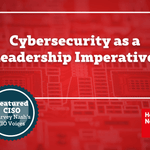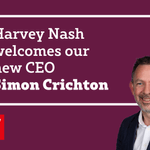Insights from Harvey Nash CIO Voices
Welcome to the latest edition of Harvey Nash’s CIO Voices, where we spotlight the perspectives of technology leaders shaping the digital future. This month, we explore a challenge that every CIO, CTO, and digital decision-maker has faced since 2020: how to build resilient, high-performing tech teams in a hybrid world.
We spoke with two leaders who have navigated this challenge firsthand: Michael Goldberg, Vice President of Strategic Partnerships at Harvey Nash, and Roberto Galdamez, Chief Information Security Officer at Kovack Financial Network. Their experiences span tech recruitment and cybersecurity, but both agree that resilience in hybrid teams is shaped more by the reasons for and methods of work than by location.
Before we dive in, a huge thank you to both leaders for their candor and depth. What follows is not just a checklist, but a lens into modern leadership one that centers on adaptability, trust, and purpose.
Clarity and Connection Drive Engagement
Engagement in hybrid teams doesn’t come from office perks or flashy incentives - it starts with clarity. As Michael Goldberg explains, “Engagement starts with clarity and connection. Every team member needs to know how their work ties directly to the organization’s objectives and goals.”
This clarity is essential for technology teams operating across multiple time zones and regions. In the past, co-located teams could rely on non-verbal cues and informal discussions to facilitate communication. Today, effective engagement depends on everyone understanding not just what they’re doing, but why it matters.
Roberto Galdamez, viewing this through a cybersecurity lens, adds, “Engagement starts with clarity of purpose… every control, every patch, every risk decision ties directly to our mission of safeguarding the firm and its clients.”
The importance of clarity cannot be overstated. Whether developing software or safeguarding infrastructure, clear communication transforms dispersed teams into well-coordinated ecosystems..
Both leaders also emphasize the importance of creating a culture of accountability, where individuals take ownership of outcomes. In a hybrid teams, this might mean short, focused huddles, security “time blocks,” or daily scrums that empower individuals to lead from wherever they are. As Goldberg notes, the biggest difference isn’t the tools - it’s giving people permission to own the mission.
Accountability and Autonomy in Action
The shift to hybrid structures has fundamentally changed traditional working practices. What was once organized around physical offices is now built on goals, outcomes, and trust.
Goldberg describes his organization’s approach: “Every team operates like its own mini-business, with clear ownership for sales, recruiting, and delivery.” This model thrives on autonomy but is anchored by accountability. Teams are self-contained yet interconnected, meeting in person twice a quarter for strategy and alignment, while performance is measured by impact, not hours.
Galdamez echoes this sentiment: “In a hybrid environment, the structure has to balance accountability and autonomy. You want people to do the work, but you also don’t want to be breathing on top of them.” His team organizes around security outcomes - reducing risk exposure, strengthening detection, and improving compliance—replacing traditional task lists with clear, agile goals.
He also highlights the distinct purposes of office versus remote time. For Galdamez, in-person meetings are for strategy, mentorship, and problem-solving, while deep work, documentation, and technical delivery are best done remotely.
The secret to keeping hybrid teams connected and resilient isn’t about replicating the office - it’s about reimagining it and how you lead. It’s a balance: trust, but verify; guide when needed, but create an environment where people can learn and grow.
Tools That Empower, Not Overwhelm
No hybrid team runs without technology, but tools only help when people feel empowered to use them. At Harvey Nash, Bullhorn is the recruiting backbone, while Microsoft Teams and Power BI keep collaboration transparent. As Goldberg explains, “Teams keeps conversations continuous and accessible, while Power BI helps us visualize performance and productivity across offices. That visibility fosters alignment and quick decision-making. It turns dashboards into dialogues.”
For Galdamez, the essential toolkit revolves around security visibility and continuous access integrity. His team relies on advanced Endpoint Detection and Response (EDR) systems and cloud-based platforms like Microsoft 365 and Zoom. He emphasizes, “Security and productivity can’t have separate lanes.” In too many organizations, security is seen as something that slows progress, rather than as an essential component that enables the business to move forward safely and confidently. For Galdamez, resilience depends on enabling both protection and productivity simultaneously.
While the choice of tools is important, the most significant results come when processes retain a human touch. If a Teams meeting feels unengaging, the issue often lies not with the platform, but with a lack of trust, engagement, and psychological safety among participants. Tools enable collaboration; culture sustains it.
Culture by Design, Not Perks
Culture didn’t die in 2020, it evolved. As Goldberg puts it, “Culture can’t be replicated with a ping-pong table, it has to be intentional.” The move to hybrid work exposed a truth we’d long ignored: culture isn’t a place, it’s a practice. It’s built through transparency, shared values, and recognizing contributions that truly move the needle.
Galdamez takes this further: “Security culture is people culture.” After the pandemic, his team had to rebuild not just systems but trust. Every team member needed to feel empowered to speak up, challenge assumptions, and report anomalies without fear. That’s psychological safety in action - the invisible glue of resilient teams.
He describes “cyber moments” - short discussions in meetings to recognize proactive behavior and highlight learning. It’s culture by design, not default. Today, connection isn’t measured in emojis, but in empathy. When leaders model openness, teams respond with honesty. Culture survives distance because it lives in people, not places.
Preventing Burnout in a World That Never Logs Off
Hybrid work has blurred the boundaries we once relied on. Work hours, personal time, and mental space have started to merge, increasing the risk of burnout.
“Burnout isn’t just about workload, it’s about control and recognition,” Goldberg explains. When people feel seen, supported, and trusted, they can handle a lot. But when control slips away, when every ping feels like a demand, resilience erodes.
Galdamez knows this well: “Cyber and IT teams live in constant alert cycles. Addressing burnout means managing both risk and rhythm.” His team uses automation to eliminate repetitive tasks, freeing analysts to focus on high-impact work. They rotate on-call duties fairly and keep mental health part of leadership conversations.
Hybrid resilience is about teaching teams where the off switch is and giving them permission to use it. Resilience doesn’t mean working longer; it means bouncing back stronger.
Listening: The Key to Retention
Metrics tell a story, but not the whole story. Goldberg shares that Harvey Nash relies less on formal surveys and more on regular conversations: “We stay close to our teams through one-on-ones and open discussions. People stay when they feel supported, heard, and part of something moving forward.” This marks a shift from managing through dashboards to managing through dialogue.
Galdamez adds another layer, focusing on empowerment through growth training, certifications, and skill expansion in areas like threat intelligence and GRC (Governance, Risk, and Compliance). “Team members who see their work reducing risk in measurable ways feel a deeper sense of impact,” he explains. Cross-training isn’t just good for resilience, it’s an antidote to stagnation, creating a workforce that’s adaptive, confident, and motivated. When paired with real listening, not just HR data, you achieve engagement that’s earned, not enforced.
In hybrid work, listening is the new analytics.
The Unexpected Upside of Hybrid Teams
If there’s one twist in the hybrid story, it’s this: people adapted better than anyone expected. Galdamez admits, “Hybrid work improved security discipline. With distributed access, everyone became more conscious of authentication, data handling, and zero trust principles.” Distance has made teams more self-aware. Instead of relying on physical oversight, employees are internalizing security and accountability as personal habits.
Goldberg saw something similar: when ownership and trust increase, people don’t just comply, they care. Hybrid work isn’t a compromise between office and remote; it’s a catalyst for maturity. Resilience is built not by control, but by consciousness.
Looking Ahead: The Future of Hybrid Teams
Building resilient tech teams in a hybrid world isn’t a one-time playbook, it’s a continuous act of leadership. It’s about providing clarity amid noise, connection amid distance, and autonomy amid complexity.
From Michael Goldberg’s people-first approach to Roberto Galdamez’s security-driven culture, one truth stands out: resilience begins with purpose and thrives on trust. Hybrid work isn’t about location, it’s about liberation. It gives teams room to breathe, grow, and define success on human terms.
As AI, automation, and remote collaboration continue to reshape the workplace, the leaders who master the balance between technology and trust will define the next decade of digital transformation.
Thank you to our contributors for their invaluable perspectives, and to you, our readers, for joining us in exploring what resilience really means.
Next Month’s Topic: CIO Predictions for 2026 – Is AI Going to Rule 2026? Stay tuned for a fascinating conversation about the future of tech leadership and the role AI will play in shaping it.



